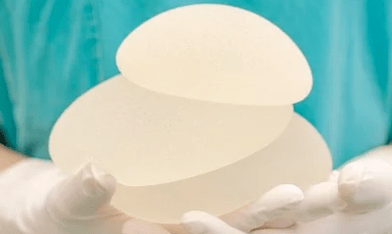
Although breast size seems to be predetermined, there are many factors that can affect breast size.
Monthly cycle fluctuations aren't the only reason your breasts get bigger and smaller, feel sore, or have other strange symptoms.
Many of the changes are related to hormone levels, but your breast size can also be affected by coffee consumption, weight changes, diet and physical activity.
We can say that your breasts can say a lot about what is going on in your body and your health.
What factors actually affect breast size?Let's find out.
1. Genetics
While genetics aren't a death sentence, they certainly play a big role in the size of your breasts.
Breast size is a combination of genetic and environmental factors.Some people tend to have large breasts.Additionally, as we gain weight, our breasts also become larger.
Genes determine the basic parameters of the breast, but not the actual size.
For example, genetic predisposition influences breast sagging, volume and shape.But breast size can change throughout life.
This doesn't mean that just because your mother and sister wore a size 3, you will necessarily be the same size.However, the probability is significantly higher than for a woman who was born into a family in which there were predominantly first breast sizes.
2. Training
In general, you're unlikely to notice any changes in your breasts, even if you do vigorous physical activity and lift weights.The fact is that the mammary gland is located above the pectoral muscle and is not a part of it.
Many people believe that you can pump up the muscles under the breast endlessly without affecting their shape and size.
Although the exercises themselves do not enlarge the breasts, training the pectoral muscles can create the illusion of larger, firmer breasts.
Push-ups, bench presses and chest flies are the main exercises that strengthen the chest muscles.
- Do 3 sets of 20 push-ups at the beginning and the same number at the end of the workout.Use this complex at least three times a week.
- Chest flyes are another useful chest exercise.Take dumbbells (or water bottles) in your hands, sit on a bench at a slight angle and keep your feet on the floor.Extend your arms to your sides (arms should be slightly bent) to chest level, then bring them back.Do 3 sets of 15 reps three times a week.
3. Intimacy
The pleasure we feel during intimacy also temporarily enlarges the breasts.
When we are aroused, our heart rate increases, which increases blood flow to various parts of our body, including the chest.This makes the breasts appear fuller and larger, although this effect is only temporary and can vary from barely noticeable to more impressive in women.
In any case, you shouldn't expect much from physical intimacy alone.Once you get back on track, your breasts will return to their normal size.
4. Phytoestrogen products
.png)
Experts say some foods can affect the size of a woman's breasts.
During the transition period, the level of the hormone estrogen increases in girls, which leads to breast growth.At the end of the transition period, hormone levels normalize and the breasts remain almost the same size throughout life.
Because the hormone estrogen promotes breast growth, products containing an estrogen analog may also affect breast size when taken.
Phytoestrogens are plant chemicals that bind to estrogen receptors in cells and behave like this hormone.
Phytoestrogens include: tofu, green soybeans, soybeans, sunflower seeds and flaxseeds.Carrots and beets also contain phytoestrogens, but they are recommended to be consumed in moderation as the side effects of consuming large amounts of phytoestrogen-rich foods are not yet fully understood.
5. Your weight
Breasts are made up of supporting tissue, milk glands and milk ducts, and the proportion of these varies from woman to woman.
For example, some women have more supportive tissue than fat and vice versa.If your breasts contain enough fat, you will notice changes in your breast size as you lose or gain weight.
Most likely, the difference will be insignificant if you lose or gain a few kilograms, but it will become more noticeable with large fluctuations in weight.
6. Phases of the menstrual cycle
The menstrual cycle can be roughly divided into two halves: from the first day of menstruation to before ovulation - the follicular phase, and after ovulation - the luteal phase.
.png)
During the follicular phase, especially on the 5th-7th.Day after the start of menstruation, low estrogen and progesterone levels are observed and breast volume is at its lowest.Because your breasts are not as affected by hormones during this period, this is the most accurate indicator of what your breasts actually look like.
When hormone levels rise during ovulation, blood flow to the breasts increases and they become fuller, rounder, and more sensitive.
In a study of more than 200 premenopausal women who had mammograms, breast density and size were greater during the luteal phase of the cycle.
If you notice anything unusual about your breasts, pay attention to changes at different points in your cycle, as this may simply be due to hormonal fluctuations.If the condition does not go away, consult a doctor.
7. Spider bites
It's unknown why, but for some reason spiders like breasts.Some spider bites can cause an inflamed lump that makes a woman think she has breast cancer.
In fact, it is most likely a reaction to a spider bite, which can be relieved with antihistamines and anti-inflammatory medications.In any case, if you suspect a spider bite, you should consult a doctor.
Breast cancer doesn't happen overnight.So if you suddenly notice redness, swelling and inflammation, it could be an insect bite.
8. Lavender oil
Lavender oil, commonly added to soaps, shampoos and detergents, may cause abnormal breast growth, a study published in the Journal of Clinical Endocrinology and Metabolism found.
For example, in girls with premature breast development before age 8, breast growth symptoms stopped after they stopped using products containing lavender oil.
Lavender oil and tea tree oil are known to mimic the properties of estrogen and block testosterone.Scientists believe that these essential oils have antiandrogenic properties, which explains breast growth.
9. Pregnancy and breastfeeding
.png)
During pregnancy, your breasts also change, preparing your body to breastfeed your baby.The blood vessels, ducts and lobules involved in milk production dilate and grow.This process results in greater sensitivity, heaviness, and enlargement of the breast.You may also notice that your areolas and nipples become larger.
A pregnant woman's breasts can grow several sizes due to hormonal changes, even more during breastfeeding.
Shortly after giving birth, the level of the hormone prolactin increases in the woman's body, as a result of which the breasts begin to produce milk and swell even more.The breast usually returns to its normal size 3-6 months after the end of breastfeeding.
If a woman has several children, the effect may be more pronounced and the size and shape of the breasts will change after several births and breastfeedings.
10. Contraception
Contraceptives not only prevent pregnancy and help regulate your menstrual cycle.Hormonal methods such as birth control pills and intrauterine devices can actually affect breast size.
When oral contraceptives first came onto the market, the estrogen content in them was very high, which is why women's breasts became significantly larger.
Modern products only contain a fifth of the hormones originally present, so the effect is not as noticeable.However, it is completely normal if you notice a slight enlargement of your breasts when starting hormone treatment.This is primarily because estrogen leads to greater fluid retention in the body.
11. Your age
Your breasts probably won't be the same as they were when you were 16 years old.Most women's breasts lose firmness over time, and this is normal.This is primarily due to loss of elasticity and overstretched ligaments.
Although changes in the breasts are a normal occurrence, sudden enlargements as well as changes in the shape and density of the breasts should alert you and be a reason to seek medical attention.
12. Good posture
.png)
Seems pretty obvious, but that's another reason you should stop slouching.With good posture, every breast looks firm and toned.
When you wear a strong muscle corset, your back is well supported, there is no hunching, your shoulders are not closed, your chest appears larger because it does not fall inwards but protrudes.
How to correct your posture
First of all, you need to constantly pay attention to how you hold your body.The habit of slouching isn't easy to get rid of, but the more you think about your posture, the better it will get.
- Your weight should rest primarily on the balls of your feet.
- Your knees are slightly bent and your feet are shoulder-width apart.
- Straighten your shoulders, arms hanging freely at the sides of your body.
- Tense your stomach.
- The head should be positioned so that the ears are at shoulder height.There is no need to tilt your head forward, back or sideways.
- Shift your weight from your toes to your heels or from one foot to the other if you need to stand for long periods of time.
13. Caffeine
Did you know that your coffee consumption can affect your breasts?Researchers from Lund and the University of Malmö in Sweden have found that excessive coffee consumption can lead to smaller breasts.
If you don't drink more than one to two cups of coffee per day, it's unlikely to affect your bust size.However, women who drank more than three cups of coffee daily had breasts that were 17 percent smaller on average than those who didn't drink coffee.
Scientists say nearly half of women have a genetic mutation that links coffee consumption to breast size.
This may be because coffee affects the female sex hormone estrogen.However, coffee also has its benefits.For example, researchers have found that it reduces the risk of developing breast cancer.
14. Breast implants

If you have breast implants, you probably won't be surprised if your breasts get bigger.However, breast implants can cause some breast tissue to atrophy.
This is because implants put pressure on the breast tissue, causing breast tissue to deteriorate over time.
And by the way: If you have breast implants, changes in breast tissue are more difficult to notice, so you should have your breasts examined regularly by your doctor.
15. Menopause
Breasts are hormonally dependent tissue, so it would be logical to assume that with the onset of menopause they become smaller due to a decrease in estrogen levels.However, this is not entirely true.
On average, women gain half a kilogram per year after menopause.This is due to reduced physical activity and a decrease in muscle mass, as well as a shift in hormones that causes more fat to accumulate in the abdominal area.
Unfortunately, gaining more than 20 pounds increases your risk of developing breast cancer by 18 percent.
Additionally, Cooper's ligaments, a connective tissue that acts like an internal bra, stretch over time.
This is why breasts become softer and begin to sag as we age.




























